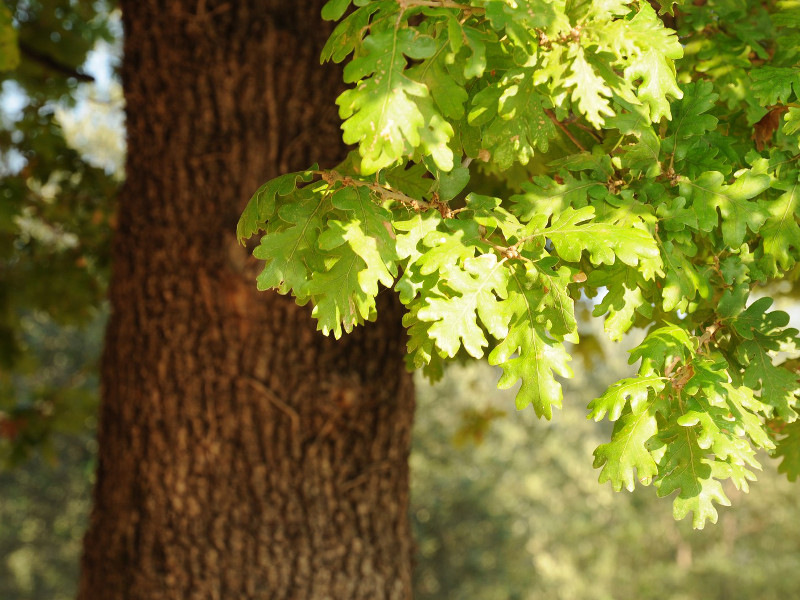Oak forests
These partly occupy south-facing slopes on shallow, dry, warm, preferably chalky soil that has eroded or is poor in nutrients, though such vegetation is also found in siliceous areas. Oak woodlands are spacious and bright, often featuring clearings populated with a wide range of herbaceous species that prefer dry environments. It looks like mixed scrub land: white oak trees, which dominate, are joined by European hop hornbeams, South European flowering ash, Judas trees, European nettle trees, wild service trees and shrubs such as smoke bushes, whose leaves brighten the hills in autumn with an infinite range of hues. The soft ground, rich in humus, features butcher's broom, hawthorn, juniper trees, privet, heather and honeysuckle. Currently occupying less land than chestnut woodland, oak forests adapted to hot climates are found in less frequented areas that are more unspoilt from an environmental point of view.

Downy oak
(photo by: PR Colli Euganei)



